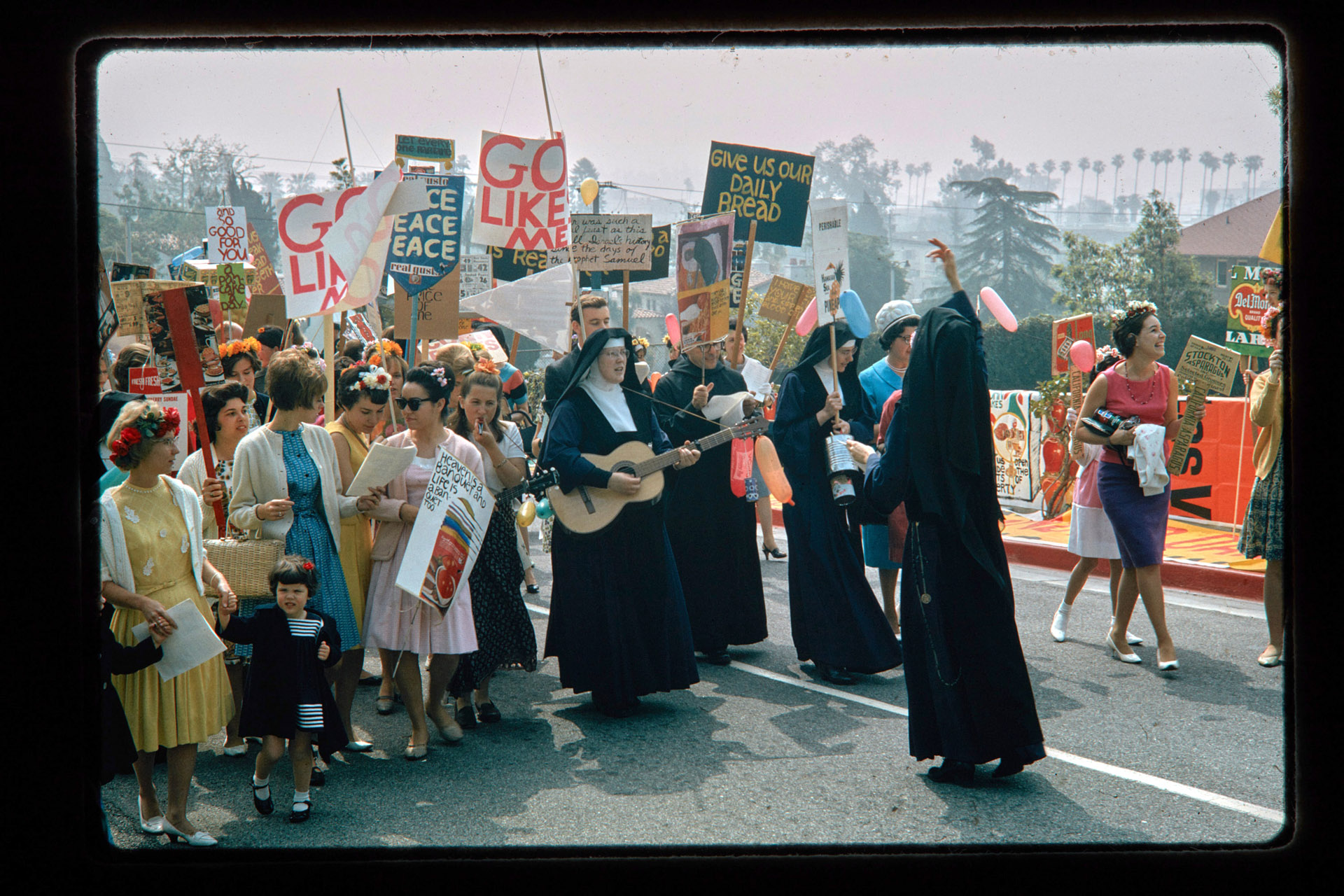
Corita Kent, Corita Kent (Sister Mary Corita) & Sister Magdalen Mary in France, ca. 1959. 35mm slide. Courtesy of Corita Art Center.

Corita Kent, Mary's Day Procession, Immaculate Heart College, 1964. 35mm slide. Courtesy of Corita Art Center.
In the 1960s in Los Angeles, the Sisters of the Immaculate Heart of Mary (IHM) bravely worked in opposition to the patriarchy of the Catholic Church, fighting for equality, their livelihoods, and their freedom. Their bold acts of faith, resistance, and activism turned the Church upside down, helping to reshape our society in ways that continue to resonate today. During this time, Corita’s art became increasingly political. Working primarily in serigraphy (silkscreen printing), she created powerful images addressing poverty, racism, and war using bold texts, bright colors, and a captivating style intended to “infiltrate the masses.”
Under the leadership of Olivian Cha, Curator and Collection Manager of the Corita Art Center, CAC is currently developing the Corita Digital Collection and Archive—a definitive online resource for Kent’s work. CAC has recently digitized 16,000+ never-before-seen 35mm photographs taken primarily by Corita between 1955 and 1968, capturing moments of this critical time in history.

Corita Kent, 35mm slide inscribed with James Laughlin quote, ca. 1960. 35mm slide. Courtesy of Corita Art Center.
Over the next three years, Cha will initiate creative engagement with this singular archive, using it as a platform to inspire new photographic discourse among artists and scholars of today. Corita is known for her contributions to the Pop Art movement but for Cha, Corita’s archive reveals a photographic practice that goes beyond the mere documentation of a moment in time. Her depiction of everyday life and its intimate details—gestures, flowers, or a simple reflection—provides unique insight into her artistic methodology and the exceptional community that surrounded her. The archive also holds photographs that served as source materials for Kent, showing the technical and aesthetic process involved in creating her more notable silkscreen prints. As Cha organizes a series of small-scale exhibitions, programs, and publications at Corita Art Center and partner institutions, she will honor Corita’s community-oriented and pedagogical approaches within her curatorial projects.

Composite image featuring: Corita Kent, Watts Towers procession with children, ca. 1955 (left), and Watts Towers procession with banners, ca. 1955 (right). 35mm slides. Courtesy of Corita Art Center.